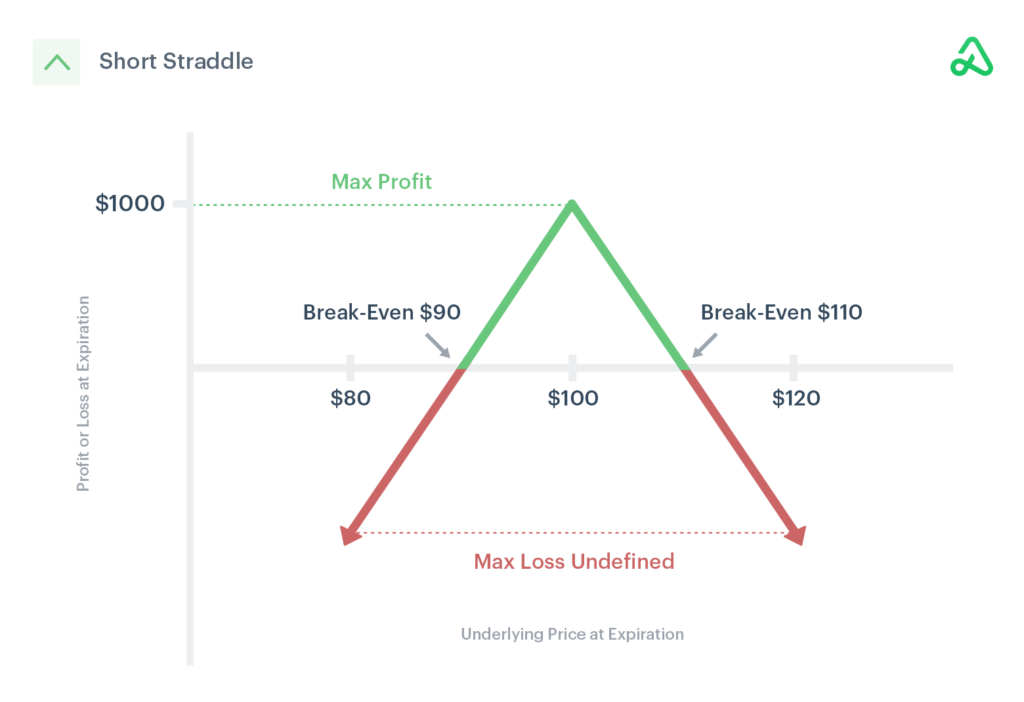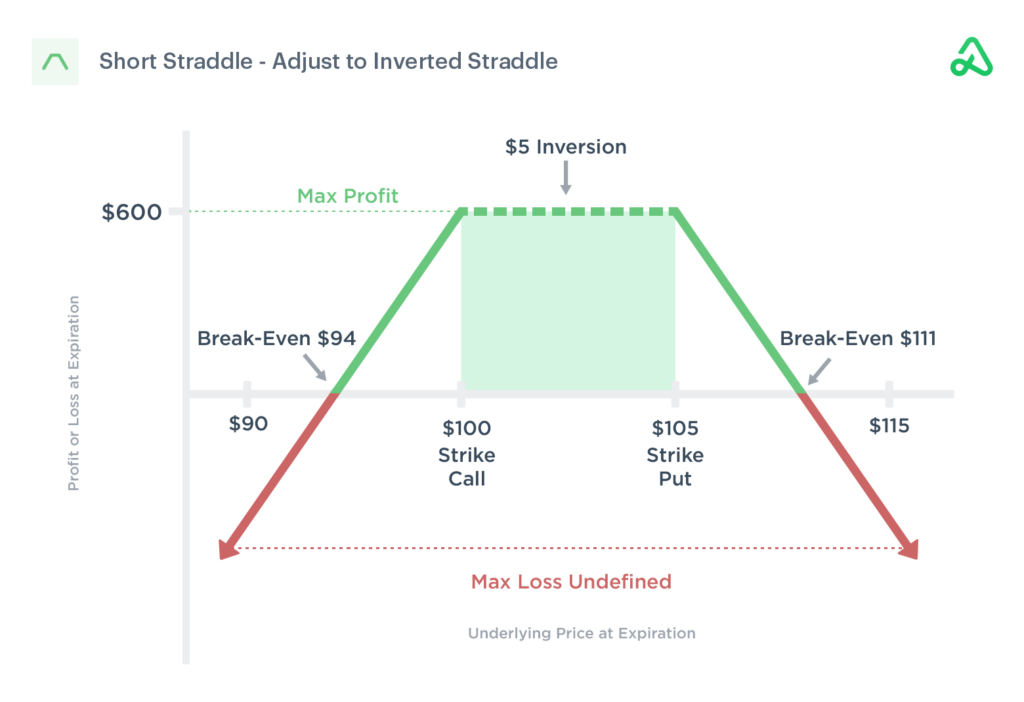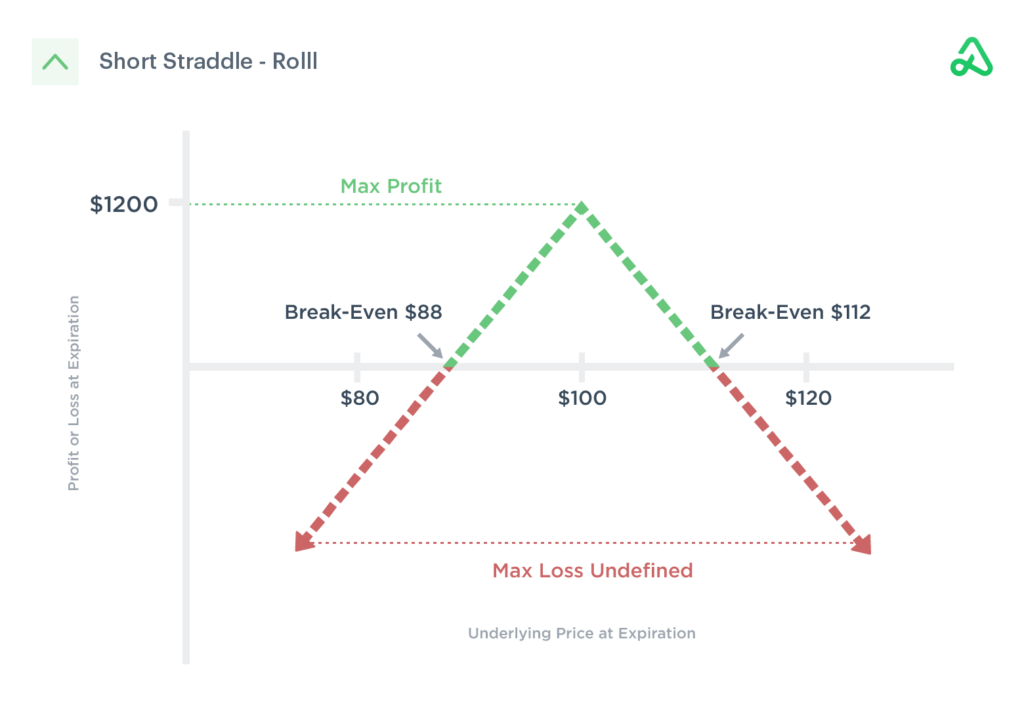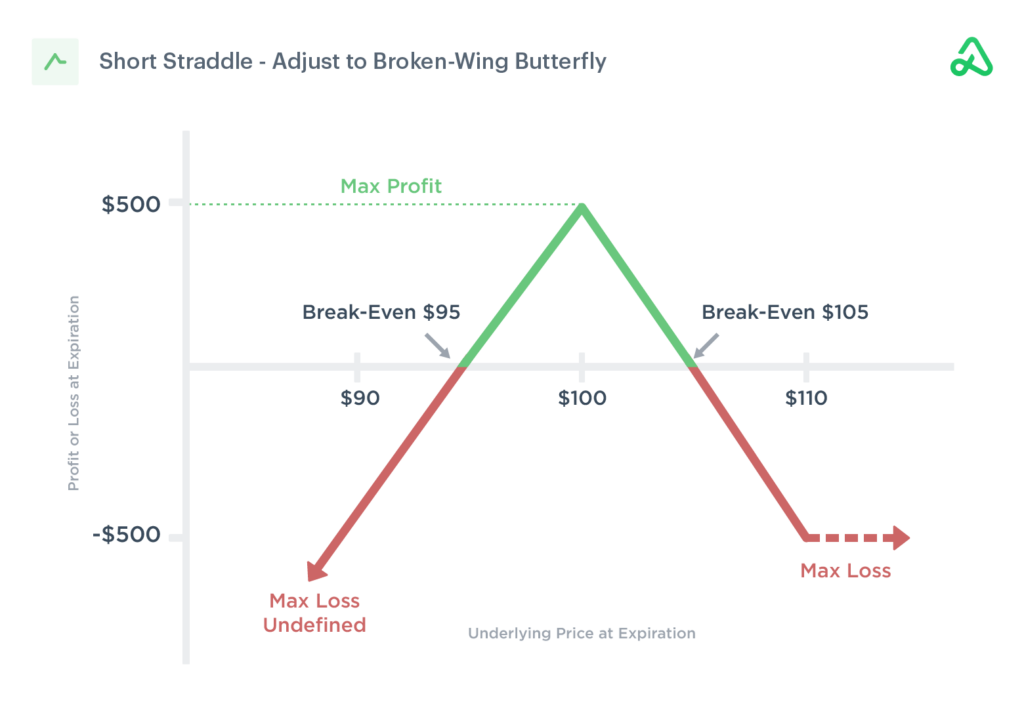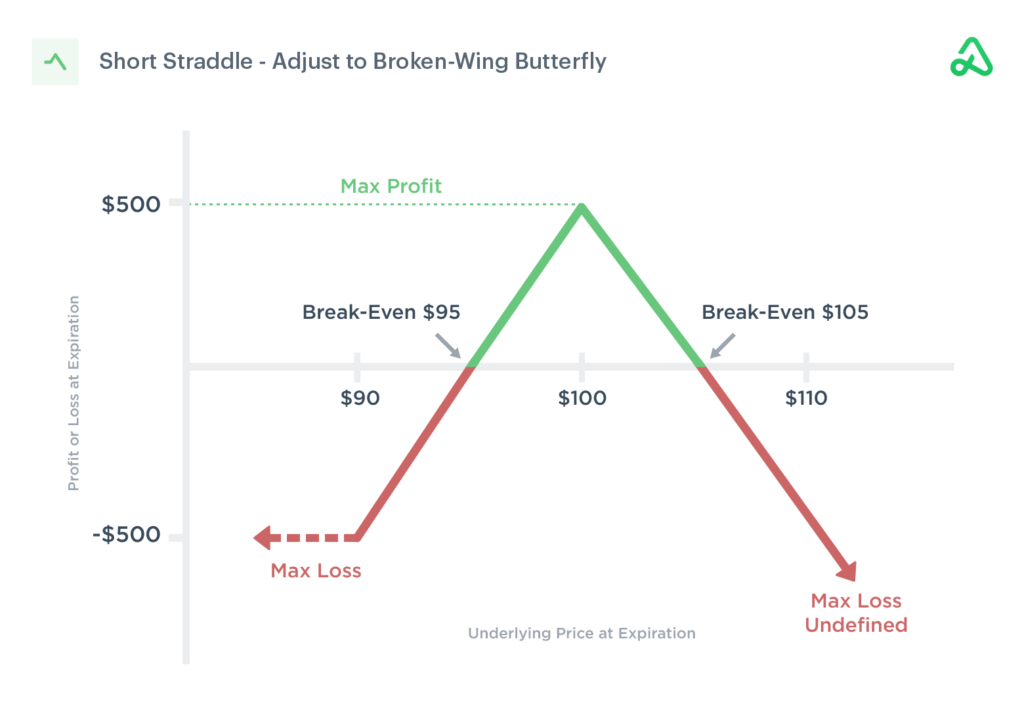Strap overview
A strap is very similar to a long straddle, except there are two long calls instead of one, which makes straps more expensive but allows for more profit potential. The two long calls give the strap its bullish bias but requires a larger directional move than a straddle because the stock price must move enough to cover the cost of three long options. A sharp move up will result in twice the profit, while the strap may also capitalize on a large move down.
A long strip is the reverse of the strap and is neutral to bearish. Two long puts and one long call are purchased at the same strike price and the same expiration date.
Long Strap market outlook
Long straps are bullish but will capitalize on a strong move in either direction. Straps require a large enough move in the underlying asset to exceed the three long options’ combined break-even price. Long straps require a significant price change and/or increased volatility before expiration to realize a profit.
A sharp rise in implied volatility typically accompanies large moves in stock prices. This will benefit the strap because the strategy depends on both movement in the underlying security’s price and implied volatility to collect higher premiums when the trade is exited.
How to set up a Long Strap
A long strap is made up of two long call options and a long put option centered at the same strike price with the same expiration date. Straps are typically purchased at-the-money of the underlying asset.
The combined cost of the long calls and long put define the maximum risk for the trade. The long strap will capitalize on a large move in either direction and/or an increase in implied volatility, though a move up in the stock price is more profitable. The potential profit is unlimited beyond the debit paid to enter the trade.
Long Strap payoff diagram
The long strap payoff diagram resembles a slightly skewed “V” shape, where the larger gains will be realized on the call side. The maximum loss on the trade is defined at entry by the combined cost of the three long options contracts. The profit potential is technically unlimited, though a large move in one direction before expiration is required. The strap’s net profit would be the credit received when the position is closed, minus the premium paid to purchase the options. The break-even point for the trade is the combined cost for the three options contracts above or below the strike price.
For example, if a long strap is purchased for $10.00 at the $50 strike price, the stock would need to be above $60 or below $40 at expiration to realize a profit.
Image of long strap payoff diagram showing max profit, max loss, and break-even points
Entering a Long Strap
The long strap is two long calls and a long put purchased simultaneously at the same strike price for the same expiration date. For example, suppose an investor believes a $50 stock will experience a large increase in price and/or volatility before expiration. In that case, a long strap could be entered by purchasing two $50 long call options and one $50 long put option. Higher volatility will equate to higher option prices. The longer the expiration date is from trade entry, the more the options will cost.
Exiting a Long Strap
A long strap looks to capitalize on a sharp move (preferably up) in stock price, implied volatility, or both. If the underlying asset moves far enough before expiration and/or implied volatility expands, the trade is exited by selling-to-close (STC) the three long options contracts. The difference between the cost of buying the premiums and selling the premiums is the net profit or loss on the trade.
At expiration, it is likely that one or more of the options will be in-the-money and will need to be exited to avoid assignment. Typically, straps are exited before expiration because an investor will want to sell the options before the extrinsic value disappears.
Time decay impact on a Long Strap
Time decay, or Theta, works against the long strap strategy. Every day the time value of the long options contract decreases. Ideally, a large move in the underlying stock price occurs quickly, and an investor can capitalize on all the remaining extrinsic time value by selling the option.
Implied volatility impact on a Long Strap
Long straps benefit from an increase in the value of implied volatility. Higher implied volatility results in higher option premium prices. Ideally, when a long strap is initiated, implied volatility is lower than it is at exit or expiration. Future volatility, or Vega, is uncertain and unpredictable. Still, it is good to know how volatility will affect the pricing of the straddle options.
Adjusting a Long Strap
Long straps have a finite amount of time to be profitable and have multiple factors working against their success. If the underlying stock does not move far enough, fast enough, and/or volatility decreases, the strap will lose value and result in a loss. Long straps can be adjusted like most options strategies but will almost always come at more cost and add a debit to the trade and extend the break-even points.
If a stock has not moved into a profitable zone by expiration, the in-the-money option(s) can be sold (the other option(s) will be out-of-the-money), and a new strap can be purchased for a later expiration. This adjustment can also be done before expiration if an investor wishes to recapture some of the premium before the contracts expire worthless. Keep in mind that this will require the stock to make an even larger move than the original trade and add risk by increasing the amount of capital committed to the trade.
Rolling a Long Strap
Long straps can be rolled out to a later expiration date if the stock price or implied volatility has not moved enough to realize a profit. To roll out the strap, sell-to-close (STC) the current position and buy-to-open (BTO) a new position for a later expiration. The new strap may be at the same strike price or can be adjusted up or down to reflect any changes in the stock price.
The downside to rolling out long options is that the roll will most likely cost money and, therefore, increase the original trade risk. The risk is still defined, but the additional debit will not only create a higher potential maximum loss, but also require the underlying stock to move more to exceed the break-even point.
Hedging a Long Strap
Hedging a long strap may be a proactive way to help retain some profits if the stock has moved sharply early in the expiration period while minimizing the overall risk of the position. Long straps need a sustained move in one direction to realize a profit. However, stocks can move quickly and retrace, leaving a once profitable position worthless.
If the underlying stock moves up or down away from the strike price, an investor may choose to hedge against a future move back in the opposite direction of the initial move. If the underlying asset moves up, an investor may choose to roll up the long put option. Conversely, if the underlying asset moves down, the long calls could be rolled down.
For example, if an at-the-money long strap is purchased at $50 for $10.00, and the stock immediately moves up to $55, one way to hedge the position would be to sell-to-close (STC) the $50 put and buy-to-open (BTO) the $55 put for the same expiration date. This will add cost to the position, but now a portion of the position can be closed for no less than $5.00 (the width of the spread between the call and put options).
If the stock price continues above $55, the strap’s bullish bias will benefit, while having additional protection from the higher-strike put. If the stock price falls below $50, the $55 strike put will trade for more than $5.00. This is a way to minimize the risk of the trade while allowing the strap to still capture profit if the stock moves dramatically in one direction.
To fully hedge the strap, the amount of long options contracts needs to be equal. For example, in the previous scenario, an additional put would need to be purchased or one of the long calls would need to be sold. If the call is sold, a profit would be realized, which would reduce the overall cost of the trade and minimize risk. If an additional put were purchased, the cost and risk would increase, but the potential profit would increase as well if the stock ultimately moved substantially lower.

